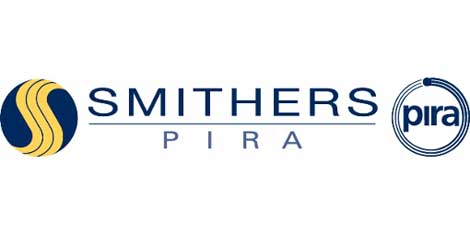
A new report from Smithers Pira: The Future of Functional and Industrial Print to 2020, examines the rapidly emerging use of printing-for-profit in novel areas outside the traditional graphics and packaging arenas. This wide range of applications in professional 3D printing, printed electronics, biomedical and more are driving market growth, in a collective industry quantified by Smithers Pira as being worth $67 billion in 2015 – and reaching more than $107 billion in 2020.
Printing technology is widely used to decorate items from architectural and automotive glass to ceramics, electronics and textiles with new functions including biomedical, display and photovoltaics becoming significant.
“Industrial functional print is growing as demand grows for construction, automotive, electronics and manufactured products that use print – and there is more print involved in the manufacturing processes. This is in stark contrast to publication and commercial print, where volumes are declining,” said Sean Smyth, print consultant and author of the report.
“Industrial print is very attractive to equipment and consumable suppliers to develop niche applications that may grow significantly, as is the case for inkjet printing of ceramic tiles.”
The functional and industrial printing industry is a dynamic one, with exciting developments across its many sectors. In Japan several of the largest printing companies report very large businesses producing decor, laminates and printed electronics, exploiting their printing skills on behalf of customers to manufacture products more efficiently.
There are clusters of development, in university laboratories and at ink and equipment suppliers. In the UK the CPI (Centre for Process Innovation) is exploring how printing can be used to manufacture a whole new series of products such as flexible displays, large-area lighting, sensors, power sources, intelligent tickets and labels, smart packaging, and entirely new physical forms of functional electronic devices. These can be thinner, lighter and more rugged than the current silicon materials, while printing allows them to be mass-produced at low cost.
While analogue printing methods – gravure, flexo, litho, screen, pad-printing and foiling – are widely used, there is very strong growth in digital methods, with new inkjet inks opening many new opportunities. These markets do not use paper or paperboard substrates; rather plastic, film, glass, metal, ceramics, textiles, laminates and composite materials are involved.
There is significant M&A activity in the supply side. For example, EFI has been making significant acquisitions to enter the ceramic and textile sectors; while Dover Corporation purchased the JK Group SPA inkjet textile ink group (Kiian, JTeck and Sawgrass) in October 2015.
Equipment and software companies are keen to spread their capabilities to industrial 3D printing too, another exciting area of the functional and industrial print industry: Adobe and Stratasys have announced a partnership that will see users of Photoshop able to send 3D files to be printed through Stratasys Direct Express, making 3D printing more accessible to creatives.
These and other key trends in functional and industrial print are outlined in The Future of Functional and Industrial Print to 2020. The technologies employed and how these will develop is a key part of the report, and there are several case studies that highlight how players have succeeded in exploiting these opportunities.
The Future of Functional and Industrial Print to 2020 is available for £4,200.
For more information, please contact:
Europe/Asia:
Steve Hill
+44 (0)1372 802025 / shill@smithers.com
North/South America:
Josh Rabb
330-762-7441 ext. 1206 / jrabb@smithers.com




